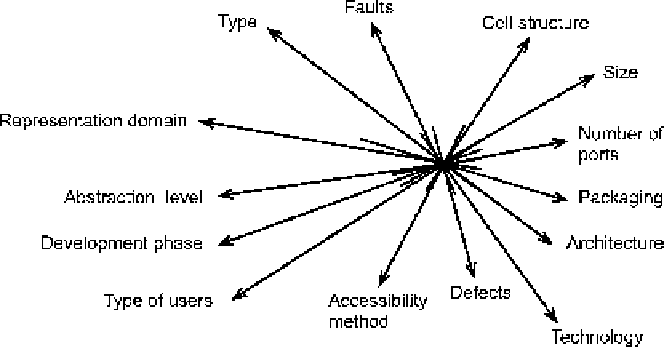Hardware Reference
In-Depth Information
6.2
Models for Memory Testing: A Multidimensional Space
Tens of models have been proposed in the literature to support the different aspects
and phases of the memory life-cycle. From design to validation and verification,
from manufacturing to testing, and from diagnosis to repair, most of the proposed
models fulfill specific needs and target well defined goals. Such a proliferation of
different “
custom
” models is not surprising at all. Memory representation and mod-
eling is a typical multidimensional space, where, depending on the specific goal,
peculiar information items need to be modeled and characterized. Figure
6.2
shows
some of the most significant dimensions of this space, not necessarily orthogonal to
each other.
Among the others, it is worth mentioning:
Abstraction level
: identifies the desired degree of details included in a memory
model. Typical values for this dimension are system level, register transfer (RT)
level, logic level, device level, and layout level. They will be deeply analyzed in
the next section.
Representation domain
: for each abstraction level, this orthogonal dimension al-
lows us to focus on different sets of aspects of interest. Typical values for this
dimension include: behavioral domain, structural domain, physical domain, and
geometrical domain.
The behavioral domain focuses on the behavior of the system, only, without any
reference to its internal organization. The structural domain focuses on the structure
(i.e., the topology) of the system, in terms of connection of blocks. Such a descrip-
tion is usually technology independent. The physical domain introduces the physical
properties of the basic components used in the structural domain, and finally the ge-
ometrical domain adds information about geometrical entities to the design.
Fig. 6.2
The memory modeling space

